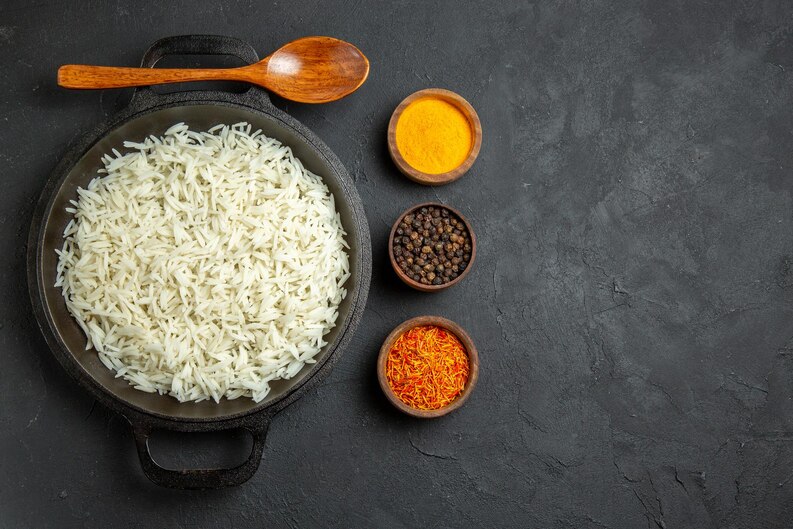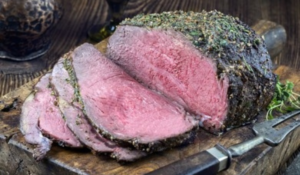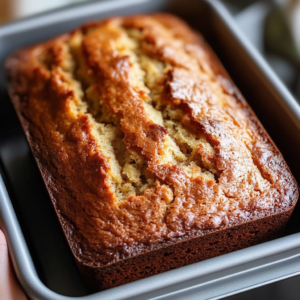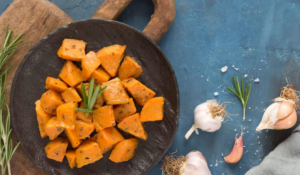Introduction to Basmati Rice
Discovering how to cook basmati rice unlocks the door to a world of aromatic and fluffy culinary delight. Originating from the Indian subcontinent, basmati rice holds a revered place in a myriad of global cuisines, celebrated for its distinctive nutty flavor and enticing aroma. Unlike other rice varieties, basmati boasts long, slender grains that, when cooked, expand more in length than in width, resulting in a light, fluffy texture that’s ideal for a wide range of dishes.
Embarking on the journey of how to cook basmati rice, you’ll find it’s not just about the cooking process; it’s about appreciating the unique characteristics that make basmati rice a culinary treasure. From its alluring fragrance reminiscent of sun-baked wood and spices to its non-sticky texture, basmati rice transforms an ordinary meal into an extraordinary experience.
Whether you’re a seasoned chef or a home cook, mastering how to cook basmati rice is a skill worth acquiring. It’s not only about following steps but also about understanding the nuances that make this variety so special. As you delve into the world of basmati rice, you’ll discover its versatility, from being the perfect bed for rich curries to playing a starring role in pilafs, biryanis, and even sweet dishes.
Join us as we explore the art and science of cooking basmati rice, ensuring that every grain you cook is a testament to your culinary prowess.
Selecting the Perfect Basmati Rice
The first step in mastering how to cook basmati rice begins at the grocery store or market, where selecting the right type sets the foundation for your culinary success. Basmati rice, known for its distinctive aroma and elongated grains, comes in various forms, each offering a unique cooking experience. The choice between white and brown basmati rice is crucial; white basmati, with its outer husk removed, cooks quicker and offers a softer texture, while brown basmati retains more of its natural nutrients and fiber, giving it a nuttier flavor and firmer bite.
When choosing basmati rice, look for grains that are long, slender, and uniform in size. This consistency in grain size is not just about aesthetics; it ensures even cooking. A high-quality basmati rice often has a slightly golden or creamy hue, indicating that it has been properly aged. Aging is key in basmati rice as it reduces the moisture content, resulting in grains that expand beautifully and don’t stick together when cooked.
The aroma of the rice can also be a good indicator of quality. Good basmati rice should have a subtle, nutty, or earthy fragrance, even before cooking. This distinct aroma is what sets basmati apart and is a crucial element in many dishes.
Remember, the journey of how to cook basmati rice is as much about the type and quality of the rice as it is about the cooking method. By choosing the right basmati rice, you’re setting yourself up for a successful and flavorful culinary experience.
Preparing to Cook
Before you dive into how to cook basmati rice, proper preparation is key to ensuring the perfect texture and flavor. This process begins with rinsing the rice, a step that cannot be overlooked. Rinsing basmati rice under cold water until the water runs clear helps remove excess starch, which is responsible for making rice sticky. This simple act significantly improves the final texture, ensuring each grain remains distinct and fluffy after cooking.
Soaking the rice is the next crucial step. Immersing basmati rice in water for about 30 minutes before cooking does wonders. It allows the grains to absorb water, expand slightly, and cook more evenly. This soaking period also shortens the cooking time and contributes to the signature elongation of the grains, a hallmark of perfectly cooked basmati rice.
Measuring the rice and water accurately is another essential part of the preparation. The general rule of thumb for how to cook basmati rice is to use a 1:2 ratio of rice to water. However, this can vary slightly depending on the specific type of basmati rice you’re using. Precision in measuring ensures that your rice will have the right texture – not too dry and not overly moist.
Lastly, choosing the right pot for cooking is important. A pot with a tight-fitting lid is ideal, as it helps to retain steam and cook the rice evenly. A heavy-bottomed pot is also preferable to prevent the rice at the bottom from burning.
By carefully preparing your basmati rice, you set the stage for a successful cooking process. Each of these steps, from rinsing to soaking to measuring, plays a vital role in how to cook basmati rice to perfection.
Cooking Techniques
Mastering how to cook basmati rice involves familiarizing yourself with various cooking techniques that can bring out the best in this aromatic grain. Each method offers a unique texture and flavor, allowing you to tailor your approach based on the dish you’re preparing.
The traditional stovetop method remains a popular choice. Start by bringing your water to a boil, then stir in the soaked and drained basmati rice. Reduce the heat to a low simmer, cover the pot, and let the rice cook undisturbed. This method typically takes about 15-20 minutes. The key is to resist the urge to peek or stir, as this can release starch and make the rice sticky.
For those seeking convenience, using a rice cooker to prepare basmati rice is a foolproof option. Simply add the rinsed and soaked rice along with the appropriate amount of water, and let the rice cooker do its magic. The appliance automatically adjusts the temperature and cooking time, ensuring perfectly cooked rice every time.
Innovative methods like oven baking or microwave cooking are also effective. To bake basmati rice in the oven, place your rinsed and soaked rice into a baking dish, add boiling water, cover with foil, and bake until the water is absorbed. For the microwave, combine rinsed rice and water in a microwave-safe dish, cover, and cook on high power, checking periodically.
No matter which method you choose, the key to how to cook basmati rice lies in maintaining a gentle cooking process and allowing the rice to steam properly after cooking. This steaming period lets the grains firm up slightly and ensures they don’t stick together. With these techniques, you can achieve fluffy, fragrant basmati rice that complements any meal.







1 thought on “How to Cook Basmati Rice : Tips, Techniques, and Recipes”
Comments are closed.